- Jun 22, 2023
- --
Why Magnolia is the best CMS for composable commerce
Experience Magnolia in action
Experience Magnolia's key features firsthand in an interactive product tour.
Take a tour nowAs digital commerce evolves, your business must stay innovative and use the best modern technologies to remain competitive. In the past, monolithic platforms provided everything required for basic online commerce. You could quickly set up your user interface (front-end), add a shopping cart, manage customer orders, and integrate a payment system.
This made it easy to manage and benefited businesses with fewer integrations.
However, a monolithic platform often depends on itself - if one piece goes wrong, everything goes wrong. Customizing for different users and adding new services as your business grows is also challenging. Modern commerce requires more flexibility than a monolithic architecture can provide.
From Monolith to Headless
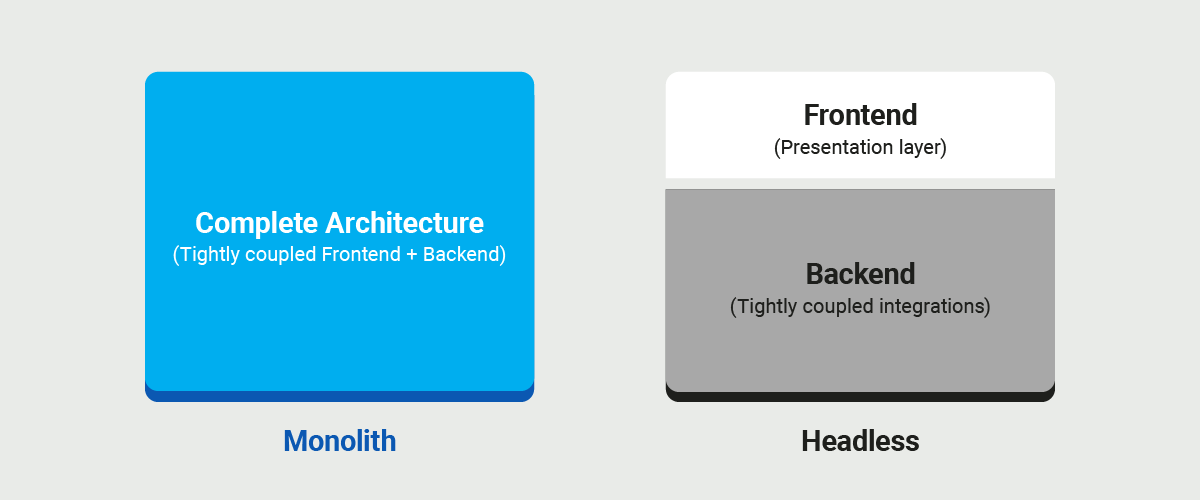
The emergence of headless commerce demonstrated the benefits of a modular approach to building eplatforms. You could easily decouple the front-end customer experience from the backend commerce engine. This modern approach to ecommerce grants you the flexibility to create custom user experiences while still leveraging the power of a complete commerce platform. Although a headless architecture is a good step towards creating better customer experiences, it still has challenges, such as a tightly-coupled backend stack with complex integrations that are difficult to set up and manage.
From Headless to Composable
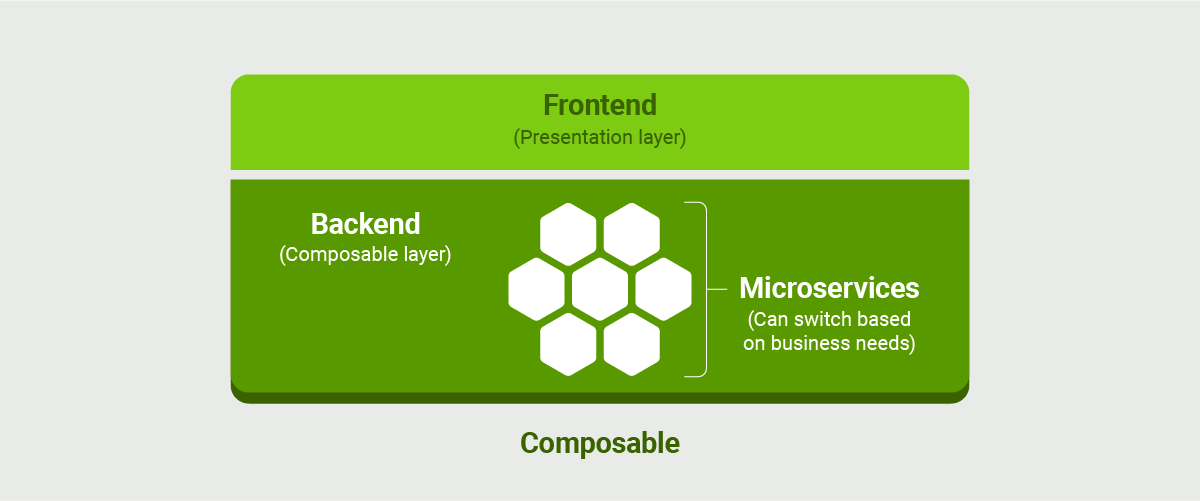
The composable approach to ecommerce builds on the benefits of headless by decoupling the backend layer into software components - also known as packaged business capabilities - that can be selected based on your business requirements.
This makes sense from a business standpoint because you can now leverage best-in-breed technologies and services to create unique commerce experiences that exceed customer expectations. You can also swap existing services for better ones in the future.
A composable commerce platform provides a layer that handles orchestration between all the tools you want to use so that you can focus on the business logic.
Where does Magnolia fit in Composable Commerce?
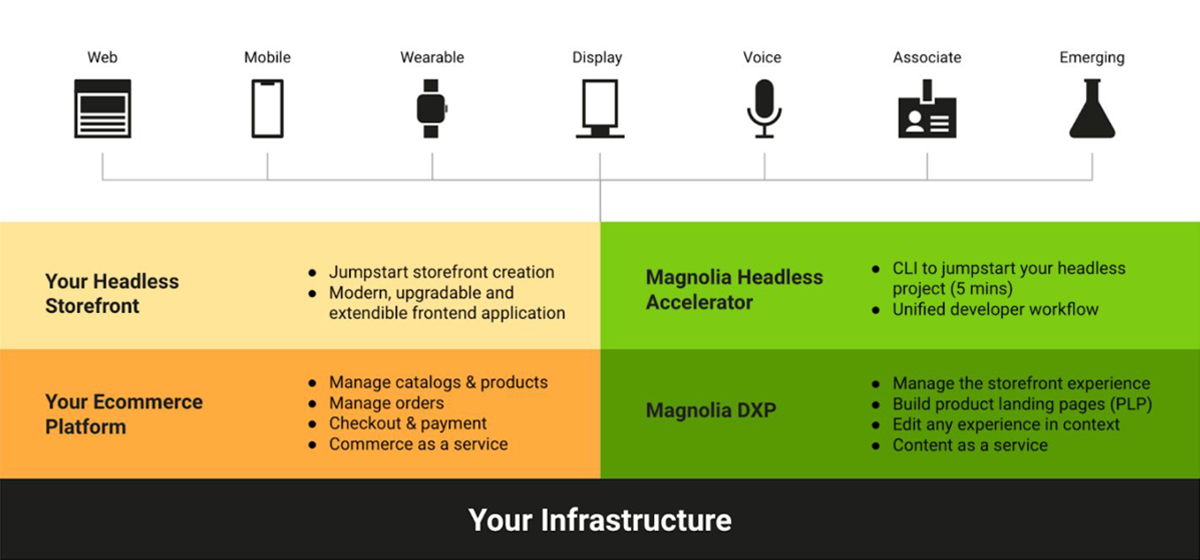
Magnolia is a digital experience platform that lets you easily connect all your data sources - content, commerce, assets, and custom data - without manual integrations. With its Application Programming Interface (API) and Connector Packs, you can integrate any system, from legacy data sources to modern microservices.
It also provides easy-to-use tools for mixing and matching this data to create unique, personalized experiences. Its enterprise-grade content management software allows you to create customizable workflows, multilingual content, automatic translations, and more.
How does this fit into the concept of composable commerce?
Integrating with your preferred microservices
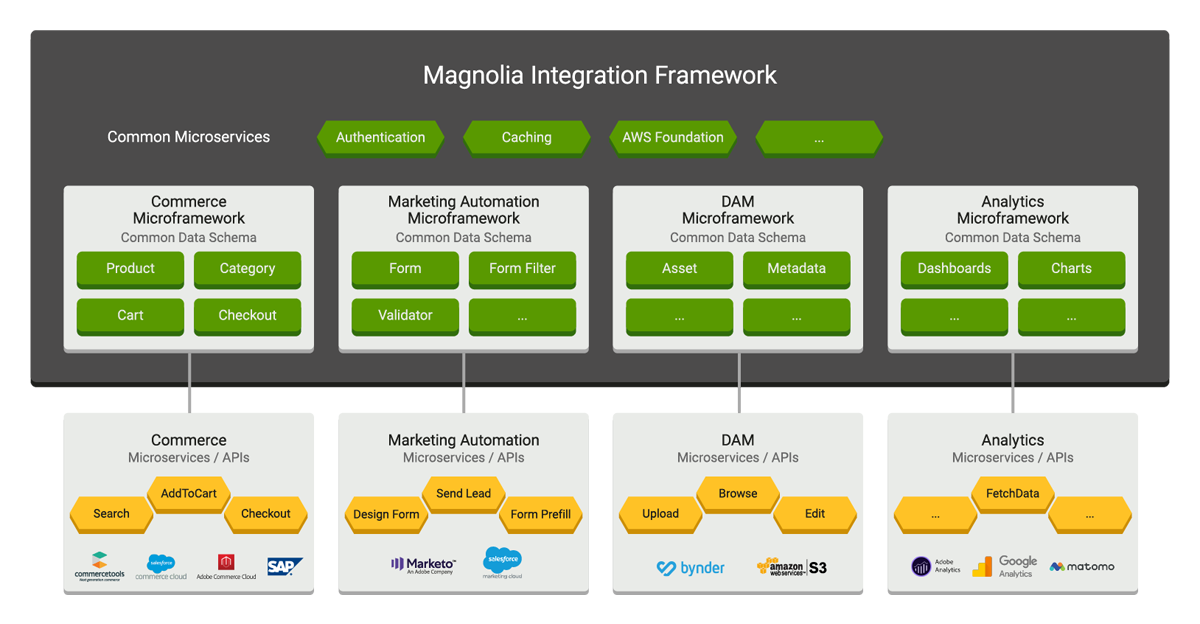
With Magnolia’s Connector Packs, you can easily integrate the best-in-breed solutions for ecommerce: Salesforce Commerce Cloud, SAP Commerce, and Commercetools; marketing automation: Marketo; and analytics: Google Analytics.
This allows you to manage your products and catalogs, get AI-driven insights on your customers’ needs, set up specific recommendations, and do much more with the same data.
Advanced content management features for different audiences
To provide a personalized experience that sets you apart from your competitors, you need to engage with your customers on a deeper level and establish an emotional connection.
With Magnolia CMS, you can easily edit and preview content for different audiences, set up publishing workflows, versioning, content reuse, and campaign management.
This allows you to create compelling stories that speak directly to your target audience, help them understand your products, and deliver a memorable shopping experience.
Marrying Content and Ecommerce with Composable Commerce
Content and commerce on the entire customer journey requires a better approach than the monolith. Headless commerce can get you started, but composable commerce helps you build your ideal ecommerce stack. Learn more about it in our latest blog.
What are the key benefits of Magnolia CMS in Composable Commerce?
When it comes to composable commerce, your business needs a robust content management system (CMS) that can adapt to your evolving needs and enable you to deliver exceptional digital experiences. That's where Magnolia CMS comes in as a game-changer, offering unique benefits that set it apart. In this section, we will explore three key advantages of Magnolia CMS in composable commerce: seamless workflows, unified authoring experiences, and powerful visual editing capabilities. By understanding how Magnolia excels in these areas, you will gain valuable insights into how it can elevate your business and unlock new possibilities.
Seamless workflow
Magnolia’s interface allows you to set up your ecommerce project, connect to the right tools, and jumpstart your project using its Headless Accelerator. By leveraging Magnolia's user-friendly tools and features, you can eliminate technical complexities and reduce the overhead typically associated with setting up an ecommerce platform. This allows you to swiftly establish your ecommerce presence and allocate your valuable time and resources toward other critical aspects of your commerce strategy.
Unified authoring experiences
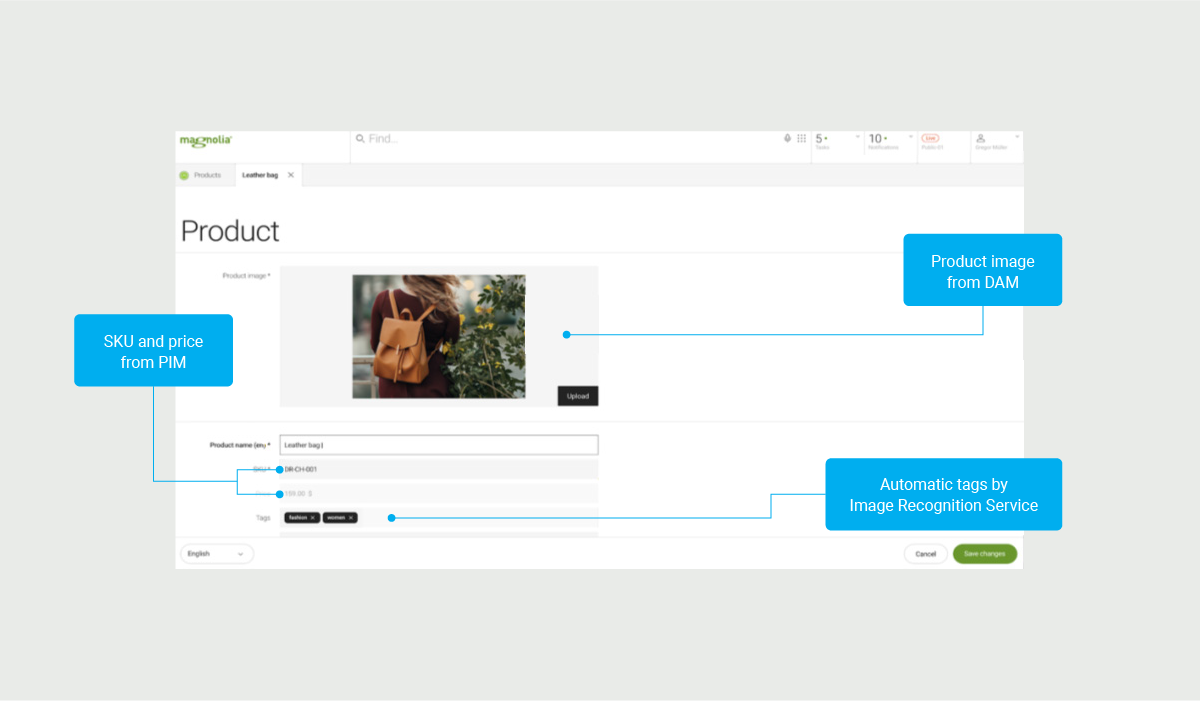
Magnolia is the only CMS that offers a unified authoring experience for all connected applications. This means that products from your ecommerce system, assets from the digital asset manager (DAM), and forms from the marketing automation tool can be brought into Magnolia as if they were native Magnolia content/data, making it easy to compose experiences.
Visual editing capabilities
Usually, everything is headless in a composable architecture, including the CMS. Most headless CMSes are, however, great for developers (API-based), but they leave editors behind. The editorial experience is poor, as they don’t offer visual editing; authors must put content into forms.

However, Magnolia can be deployed headless and offer full editorial capabilities with a WYSIWYG (What You See Is What You Get) editor. Your marketing team can edit your store’s content directly in Magnolia without writing any code.

Conclusion
Digital commerce can be pretty complex. To deliver a great shopping experience, there are so many different parts that you need to get right. Magnolia takes away a huge chunk of that complexity by providing a composable layer that allows you to set up the best services your business requires, easily swap them out for better services, and create content alongside your products so that your customers get the best experience you can provide. Click the video below to see how you can set up Composable Commerce with Magnolia.











